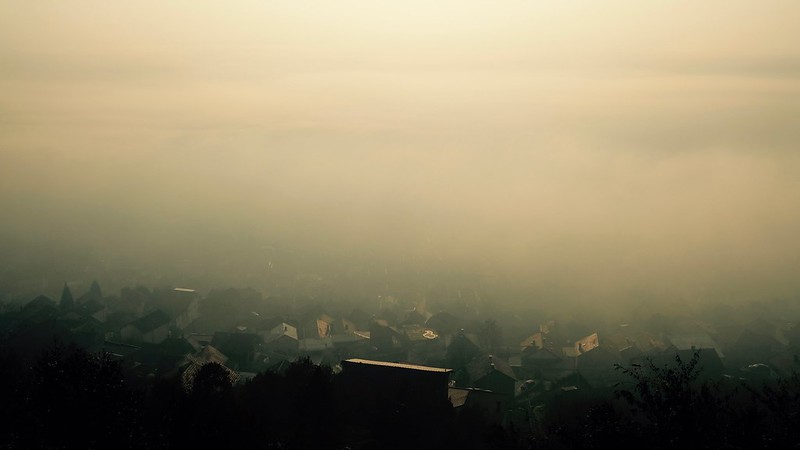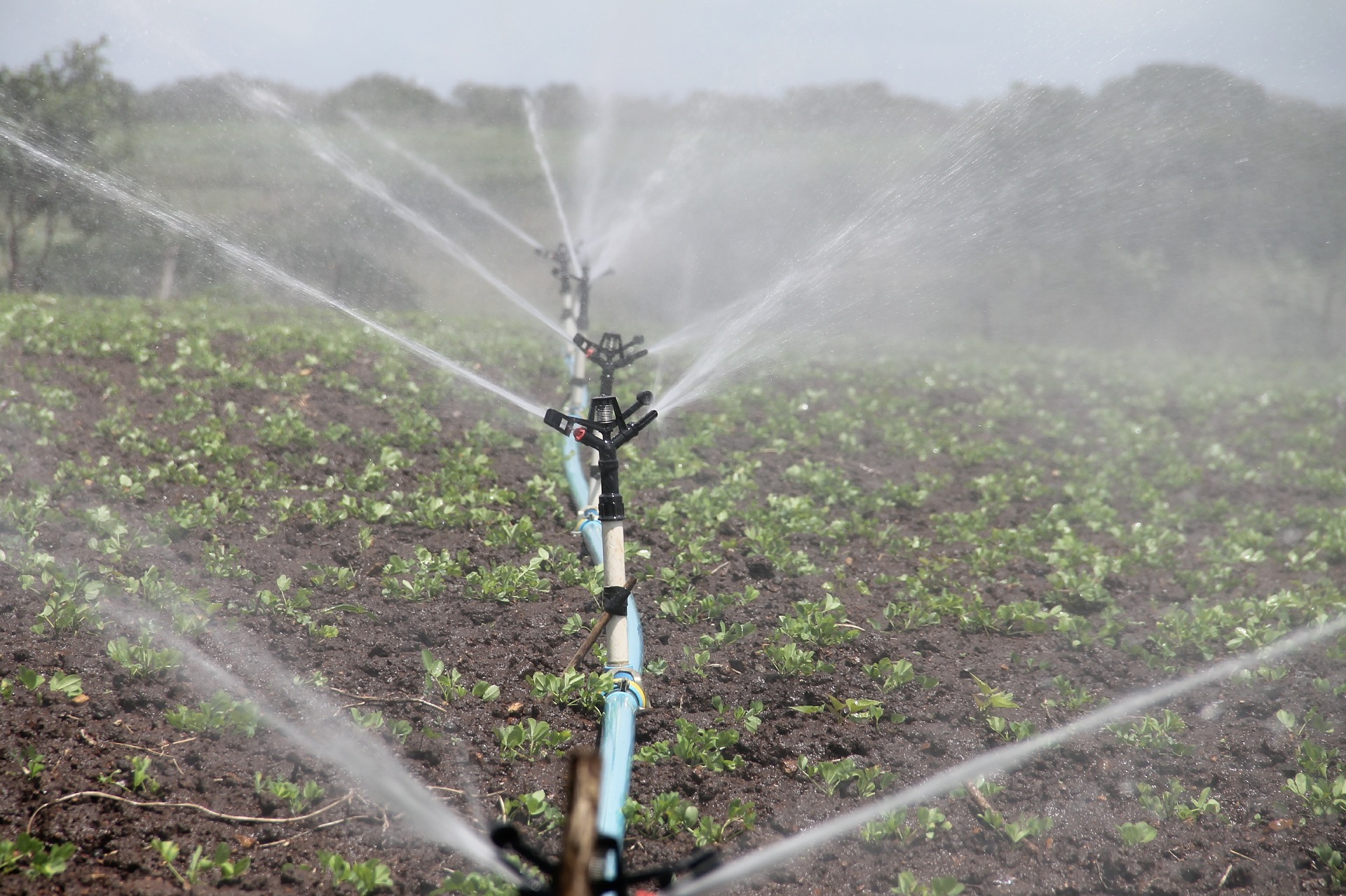Is Air Pollution Making Coronavirus Worse?
March 11, 2021Two Israeli researchers have collected data from around the world and found a worrying link between air pollution levels in OECD countries and the level of morbidity and mortality from COVID-19.
Every day we hear more and more about factors influencing the spread of the Coronavirus (COVID-19) such as new mutations accelerating infection rates and instances of people crowding too closely. But is there another factor involved in its transmissibility?
In terms of its spread, we know that the virus is a respiratory illness transmitted from person to person via droplet or fluid fragments carried through the air, which has prompted many hypotheses over the past year to question whether air quality also affects the spread and dimensions of the pandemic.
In the effort to find a clear answer to this question, a new Israeli study found a link between air pollution levels in OECD countries and the levels of morbidity and mortality present in those countries. In the recent study, Dr. Zohar Barnett-Itzhaki and Dr. Adi Levi focused on two common types of air pollutants, exposure to which can cause various negative health effects.
One is fine particulate matter (PM), with a diameter of less than 2.5 microns (thousandth of a mm). These particles are emitted into the air as a result of burning fossil fuels in vehicles, power plants, mining and quarrying operations, and naturally via forest fires and dust storms. Due to their microscopic size, they are able to easily penetrate deep into the lungs and from there, into the bloodstream. Chronic exposure to this pollutant contributes to the risk of developing cardiovascular and respiratory diseases as well as lung cancer.
The second pollutant is nitrogen oxides (NOx). These gases form due to reactions involving nitrogen and oxygen during fuel combustion at very high temperatures in vehicle engines, factories, and power plants. NOx gases are known to irritate the respiratory system, causing the development of bronchitis, asthma, and impaired lung function.
The researchers compared the data on these pollutant concentrations in the OECD countries between 2015-2017 (data representing chronic exposure to these pollutants) to the morbidity and mortality data derived from COVID-19 between January 21st to June 7th, 2020.
Red and Polluted Countries

As previously mentioned, the study dealt with 36 OECD countries, including Israel.
“These are countries we can rely on when it comes to the morbidity and mortality reports they provide—in contrast to some other countries in the world whose data reliability is lower in this context, whether due to underreporting or relative lack of testing,” says Barnett-Itzhaki, Health and Environment Researcher at the Ministry of Health and Faculty Member of the Faculty of Engineering at the Ruppin Academic Center.
In the countries surveyed, COVID-19 morbidity and mortality levels on the 10th, 20th, 40th and 60th days after the discovery of their first verified case were found to be positively correlated with the levels of PM2.5 in the air in the years surveyed. COVID-19 morbidity and mortality on the 60th day was also positively correlated with NOx concentrations in those years.
In addition, the researchers divided the surveyed countries into “red” countries in which the number of patients on the 80th day following the first verified case was greater than the median of rates of confirmed cases (such as Italy and Spain), and “green” countries” in which this value was less than the median (such as New Zealand and Greece). They found that the concentrations of air pollutants—especially Nitrogen oxides—from 2015-2017 were significantly higher in all the red countries compared to the green ones.
Is the Virus Hitching a Ride?

So, how exactly does air pollution affect the development and spread of the Coronavirus? One possible mechanism is related to the fact that air pollution impairs the function of the respiratory system.
“Exposure to air pollution can damage the body’s defense mechanisms, including the cells of the respiratory system and their ability to eliminate both pollutants and pathogens, such as viruses and bacteria,” says Barnett-Itzhaki. “Therefore, people who are exposed to chronic air pollution are more prone to illness and especially to respiratory illness.”
Beyond that, recently an assumption was postulated that the aerosol droplets by which the virus spreads from person to person might be able to “ride” on particulate matter pollutants of various sizes such as PM2.5 and PM10 (particulate matter smaller than 10 microns), which may in some cases increase exposure to the virus.
“The vast majority of the tiny droplets emitted when we sneeze, cough, or talk sink pretty quickly, but tiny droplets, or aerosols, along with particulate air pollution can float in the air and stay in the area longer, especially in enclosed spaces where air circulation is limited, as per studies that tested infection in restaurants, buses, and spaces where physical training takes place,” explains Levi, the Scientific Director of the Israeli Association of Ecology and Environmental Sciences and head of the Environmental and Sustainability Division at the Achva Academic College.
“Beyond that, fine respiratory particles are able to penetrate the deepest areas of the lungs and even reach the bloodstream, which if contaminated with the Coronavirus, can also affect the ability of viruses to enter our body,” he adds.
It should be noted that the relationship found in the study is not necessarily causal. That is, even if an association between air pollution and morbidity and mortality from the Coronavirus is found, air pollution is not necessarily the direct and exclusive cause of morbidity and mortality.
“The new study joins similar findings from recent months from Italy, the Netherlands and the US, for example,” says Levi. “Beyond that, air pollution damage to the respiratory system has been well known to the scientific community for a long time, and outdoor air pollution has been defined by the International Agency for Research on Cancer (IARC) as a definite carcinogen for humans since 2013 (classified as Group 1 agents)”.
Although the air pollution data the researchers based their finds on predate the Coronavirus, this data still provides an accurate measurement of chronic air pollution concentrations in the examined countries and explains the effect they have on morbidity rates over time.
“Usually, significant damage to the respiratory system is not caused by a particular instance of air pollution that occurred on one day amongst others. Rather, it is the continuous exposure to high levels of air pollution over time that inflicts damage, especially in sensitive populations such as the elderly,” says Levi. “A time span of three years represents a chronic exposure of a population, so it is very relevant.”
Reduce Air Pollution

One of the countries included in the study is Israel, which was defined by the criteria set by the researchers as a “red” country. The state of air pollution in Israel is far from ideal, and it is known from previous studies that the average annual exposure of all Israeli citizens to a number of air pollutants (including fine particulate matter) is higher than the thresholds set by the Ministry of Environmental Protection.
The entire population of the country is exposed to fine particulate matter in concentrations that are higher than the value limits established by the Clean Air Law—values whose deviation warrants risk or damage to humans. In central areas like Tel Aviv and Rishon LeZion, levels of NOx are also higher than the value limits, as are ozone pollutants in open areas.
Regardless of the Coronavirus pandemic, however, there is no doubt that exposure to air pollution is detrimental to human health. It is estimated that over 2,000 Israelis die prematurely each year as a result of air pollution. Chronic exposure to high levels of air pollution has been linked to a wide range of health defects, including respiratory diseases, heart disease, stroke, various cancers, diabetes, obesity, osteoporosis, birth defects and premature death. In addition, according to the OECD, the costs of air pollution in Israel reach more than $7 billion a year (an amount that includes the cost of hospitalization days, the cost of medical care for patients, the loss of working days for the economy, and more).
“Our findings are a reminder to policy and decision makers around the world of the great importance of reducing air pollution in areas with high population concentrations, and in particular, reducing fossil fuel burning (oil, coal and natural gas) even beyond the environmental benefits of reducing greenhouse gas emissions,” Levi explains.
“We still do not know how long the Coronavirus will remain with us, but even after it, if we can significantly reduce air pollution, it is likely to reduce the ability of respiratory viruses to severely harm sensitive populations in the future and improve the general health of our citizens overall,” he concludes.
This ZAVIT Article was also published in print in The Jerusalem Post on 21 February 2021







